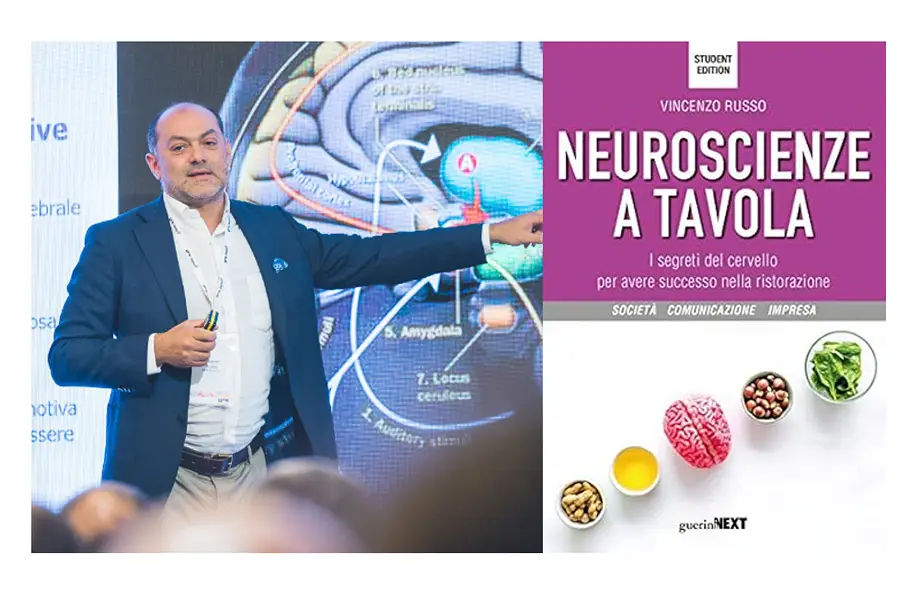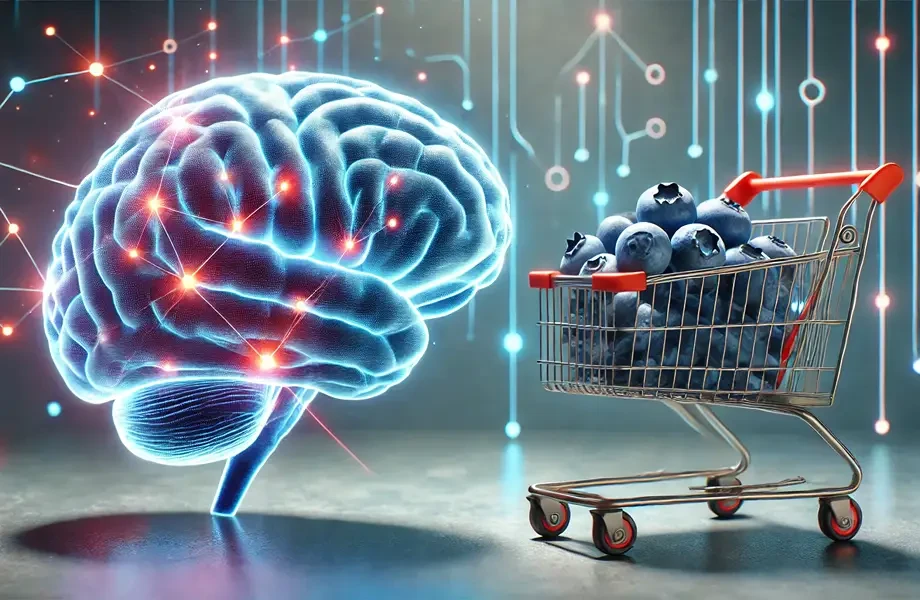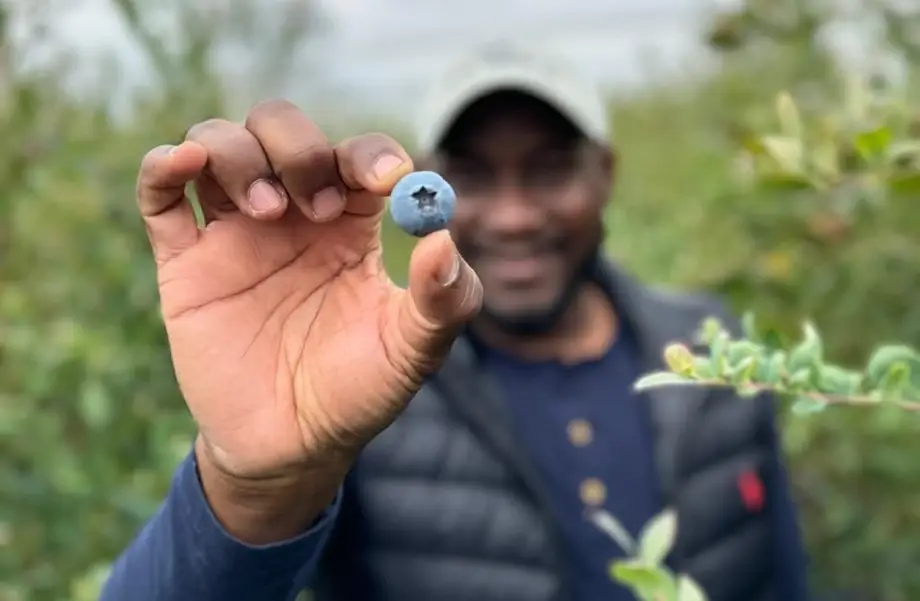A 'white' blueberry, the one with the bloom, attracts more in the store than a blue one. Why? "In a recent study we conducted, the first is preferred by consumers because it seems more natural." These are the words of Vincenzo Russo, professor of consumer psychology and neuromarketing at IULM University in Milan, whom we met at an event dedicated to organic products.
We reconnected with the university professor to delve deeper into the opportunities offered by neuromarketing—Russo has also authored books on its application in the agri-food sector—with a specific focus on its applications in berries and fresh produce.
The study in detail
With his research team, the professor conducted a study on Chilean blueberries for a South American export company. An interesting finding from the study is the importance of color: berries “with bloom”—the natural white coating that characterizes fresher and less handled fruit—are preferred over the blue variant, which modern consumers associate with being artificial.
The analysis covered four themes: packaging, tasting, color, and origin. Here are the study's objectives: analyzing consumer behavior toward Chilean blueberries, the cognitive and emotional impact of different packaging, the exploration patterns and visual behavior towards stimuli, and finally, the visual and taste analysis of the blueberries.
Stimuli were assessed in different phases, starting in the laboratory with four images of packaging (125/250/500 grams and in a cup), followed by tasting with blue and white blueberries (the latter being the ones with bloom), and finally, fieldwork involving a "shopping simulation on packaging at Ipercoop La Torre in Milan."
Sample characteristics
The sample included 20 subjects—10 involved in laboratory testing and 10 in fieldwork—with equal distribution across two age groups: 28–35 and 45–64 years. Gender distribution was as follows: 60% women and 40% men.
The research employed various methods. Here is the full list: electroencephalographic, physiological activation, analysis of implicit attitudes, eye tracker analysis, face reader, and rational analysis, confirming the study's complexity and depth.
Preferred packaging: 250 and 125 grams
In terms of packaging—as seen in the photo—packages of 500, 250, and 125 grams were compared alongside a container referred to as a cup.
What were the results? "The best performance was achieved by the 250 and 125-gram packages—especially the latter—with the highest approach/withdrawal indices. The 500-gram package received a positive but near-zero value, thus being evaluated as almost neutral."
The cup container performed negatively, showing "the worst performance" with a negative approach/withdrawal index.
The research is not publicly available, but it indicates the parameters and methods used to understand consumer purchasing behavior in response to stimuli, particularly visual ones.
The interview
Beyond the research on blueberries, Professor Russo explained the connections between neuromarketing and the food sector.
Professor Russo, can you explain how neuromarketing can be applied to the fresh produce sector?
Neuromarketing studies the brain's reactions to marketing stimuli. In the case of fresh produce, this means understanding how consumers perceive fruits and vegetables on an unconscious level and how these perceptions influence their purchasing decisions.
What are the most important aspects to consider in this research?
First of all, we need to acknowledge that our brain is strongly dominated by sight. Fifty percent of our brain cells are dedicated to vision, while only 1% are dedicated to taste and smell. This means we are far more influenced by visual stimuli than by gustatory or olfactory ones. And this is where the effect of color comes in.
 Vincenzo Russo, professor of consumer psychology and neuromarketing at IULM University in Milan
Vincenzo Russo, professor of consumer psychology and neuromarketing at IULM University in Milan
Can you give us a concrete example of how this principle applies to fresh produce?
Take color, for example: if we increase the amount of red in a fruit juice, consumers will perceive it as sweeter and fruitier compared to the same juice without added color. Another example: presenting a chocolate mousse on a white plate will make it seem slightly sweeter compared to the same mousse on a black plate.
When using darker, black hues and low-frequency music, the food is perceived as less sweet, perhaps even more savory, compared to the same product paired with high-frequency music and brighter colors.
Can the color of the packaging or the store's display area influence taste perception?
Absolutely. In one study, we had consumers taste the same wine in a cellar illuminated with lights of different colors. Under red light, the wine was perceived as sweeter, and consumers purchased more compared to when the light was green. Music and other sensory stimuli can also influence taste perception.
Another important element is product visibility. How does neuromarketing address this aspect?
We conducted a study where we changed the cap color of a wine bottle from black to red. The bottle with the red cap was noticed much more quickly by consumers. Increasing product visibility by 10% can raise purchase likelihood by up to 35%.
What advice would you offer to fresh produce operators to improve their marketing strategies?
I would say it's essential to consider all sensory stimuli that can influence consumer perception, from packaging color to in-store music. Neuromarketing offers valuable tools to understand how to optimize these elements and boost sales.
I wrote a book titled *Neuroscience at the Table*, which explores the effects of various sensory stimuli, from taste to smell, explaining neurogastrophysics—the science of how taste can be altered by stimuli unrelated to flavor. These elements, such as store lighting, impact purchasing choices. In a wine study, we observed how different lighting in a cellar influenced perceived taste, with sales implications.
Neuromarketing provides a toolbox that helps enhance products and their presentation, leading to increased sales.
Gianbasilio Nieddu









